
The Comprehensive Guide to
Lab-Grown Diamonds
Understanding Lab Grown Diamonds
Lab grown diamonds, also referred to as man-made, synthetic, engineered, or cultured diamonds, are cultivated in meticulously controlled laboratory settings. Using state-of-the-art technology, we emulate the conditions that foster natural diamond formation beneath the Earth’s crust in the mantle.
These diamonds are composed of genuine carbon atoms arranged in the distinctive diamond crystal structure, identical to their natural counterparts. Consequently, lab grown diamonds possess the same optical and chemical properties as natural diamonds, matching their scintillating beauty and enduring strength.
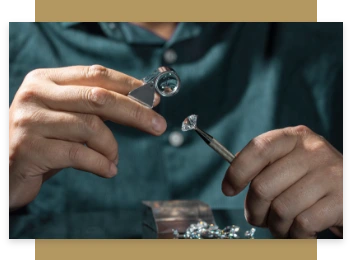
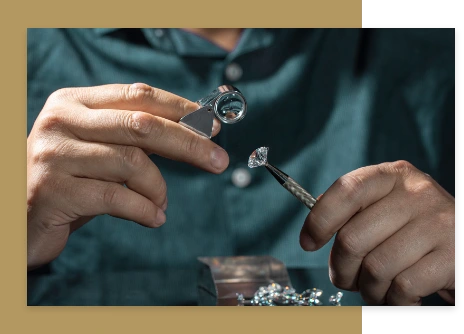
Are lab growns real diamonds?
The answer is yes. Lab grown diamonds are indeed real and authentic, sharing the identical chemical composition as their mined counterparts. When juxtaposed with a similarly graded natural gem, a lab grown diamond showcases a virtually identical appearance, reinforcing its authenticity and allure.
The Creation of Lab Diamonds
Lab diamonds are created through one of two scientific processes: High-Pressure High-Temperature (HPHT), or Chemical Vapor Deposition (CVD). At Diamond Lab, we use both methods.
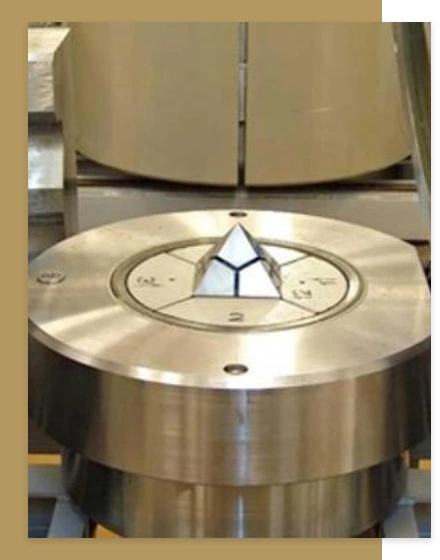
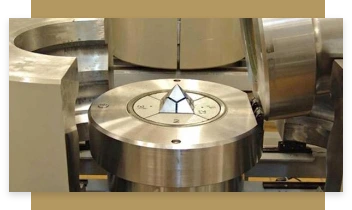
High Pressure High Temperature (HPHT)
HPHT mimics the natural diamond creation environment deep within the Earth. Several types of HPHT technologies exist, but for the production of gem-quality lab grown diamonds destined for jewelry, the BARS press method is favored. The BARS press, a Russian invention, employs a combination of inner and outer anvils to exert hydraulic pressure on the growth cell within the unit. This growth cell holds all the elements necessary for diamond creation: a minute diamond seed, finely refined graphite, and a catalyst composed of a blend of metals and powders. With temperatures consistently hitting 1,300 degrees Celsius and pressures exceeding 50,000 atmospheres applied to the growth cell, the contained elements melt over several days. Upon cooling, these elements reform to create rough, lab grown diamonds, ready for extraction, cutting, and polishing.


Chemical Vapor Deposition (CVD)
In the CVD process, the growth of a Diamond Lab diamond begins with the placement of a small piece of carbon, known as a seed, into a low-pressure microwave chemical vapor deposition chamber.
Gases in the chamber interact with electrical energy, igniting a plasma ball. This leads to the formation of a cloud within the chamber, from which carbon molecules “rain” onto the seed. Between six to twelve weeks, a substantial rough diamond is formed. This rough diamond is then cut, polished, and graded by the same prestigious labs that certify earth-mined diamonds, ensuring quality and consistency in every gem we produce.
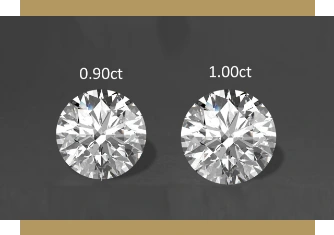
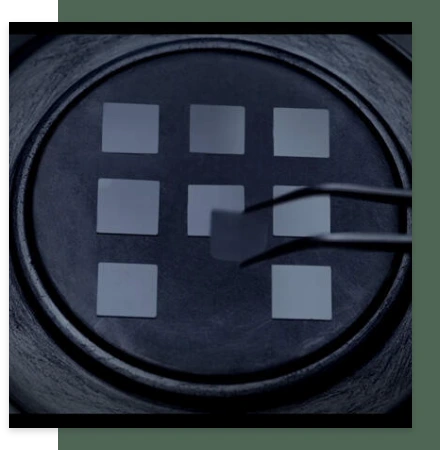
Lab Grown Diamonds vs. Diamond Simulants
The difference between lab grown diamonds and diamond simulants is crucial. Diamond simulants, like cubic zirconia and moissanite, might resemble diamonds in appearance, but they are not true carbon crystals. Lacking the same chemical and physical properties of natural diamonds, simulants typically retail at significantly lower prices than lab created diamonds. With careful observation, one can distinguish simulants from natural or lab created diamonds using the naked eye.
Both natural and lab created diamonds possess unique thermal conductivity properties that set them apart from cubic zirconia, discernible with a handheld diamond tester. Some lab created diamonds, as well as certain natural colored diamonds, might be misidentified as moissanites by specific diamond testers due to similarities in electrical conductivity. However, gemologists can typically distinguish diamonds from moissanites based on their different refractive properties. While moissanites exhibit double refraction, diamonds exhibit single refraction.
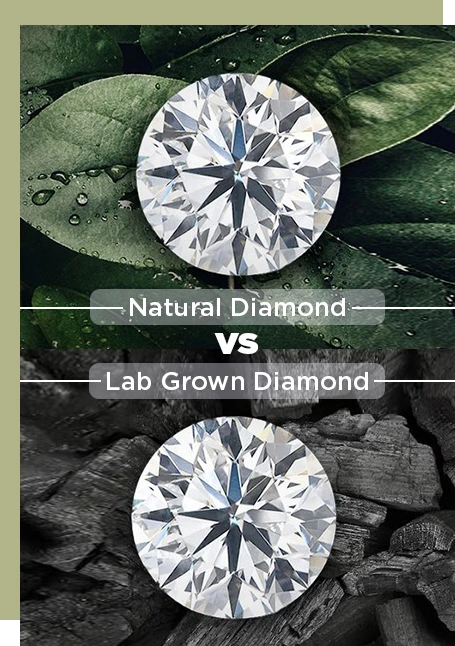
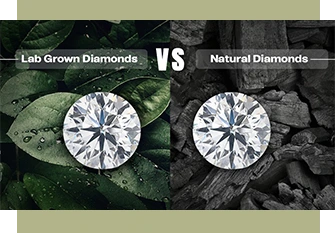
Lab Grown Diamonds vs. Natural Diamonds
Lab grown diamonds created at Diamond Lab hold the identical physical, chemical, and optical traits as natural diamonds, and they radiate the same fire, scintillation, and sparkle. Through the lens of a jewelry loupe, it’s almost impossible to tell apart lab created diamonds from natural ones. Lab created diamonds may contain different trace elements compared to natural diamonds, but these do not influence the diamond’s appearance. Distinguishing lab created diamonds from natural ones requires tests conducted with specialized equipment. To ensure transparency and authenticity, every lab created diamond available for purchase from Diamond Lab comes with a gem certification, explicitly identifying it as laboratory grown.
The Advantages of Lab Grown Diamonds
A diamond grown in a lab holds the same authenticity as one mined from the earth. They possess identical physical and chemical properties and are cultivated under comparable temperature and pressure conditions, yet without the conflict or ethically contentious practices often associated with some diamond mines. In fact, due to the highly regulated environment and closely supervised process, lab grown diamonds frequently surpass their natural counterparts in quality.
Here are some of the foremost benefits of choosing a lab grown diamond:
- Elevated aesthetic appeal, thanks to superior, brighter quality and enhanced purity
- Fewer imperfections
- Eco-friendly production process
- Increased affordability
- Capability to create colors seldom seen in nature, making exclusive and sought-after pieces more accessible
- Traceable origins ensure diamonds come from reputable sources that uphold ethical treatment of workers and communities
Certification and Grading of Lab Grown Diamonds
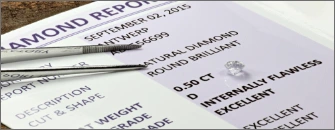
Lab grown diamonds are treated the same as mined diamonds.. Once fully grown and cut, they are sent to an independent gemological laboratory to be evaluated and certified by a professional gemologist.
The grading criteria for lab grown diamonds align with those for traditional diamonds, concentrating on the four Cs: cut, clarity, carat, and color. The cut, which determines the diamond’s brilliance and is often considered the most significant factor. Clarity speaks to the diamond’s transparency and absence of flaws or inclusions. When it comes to clear diamonds, the absence of color corresponds to a higher grade. Lastly, carat refers to the diamond’s size and weight. Each diamond is meticulously inspected and assigned a quality rating.

Diamond jewelry symbolizes a significant investment and can serve as a cherished gift for yourself or a loved one. Whether donned as everyday adornments or showcased on special occasions, diamonds embody a versatile elegance. By opting for a lab grown diamond from Diamond Lab, you invest in a stunning, high-quality piece that also aligns with ethical and environmentally friendly values. Our diamonds’ origins are transparent, their quality guaranteed, and their beauty unrivalled. As a family-run jewelry workshop since 1973, we take pride in our craft and commitment to sustainability.
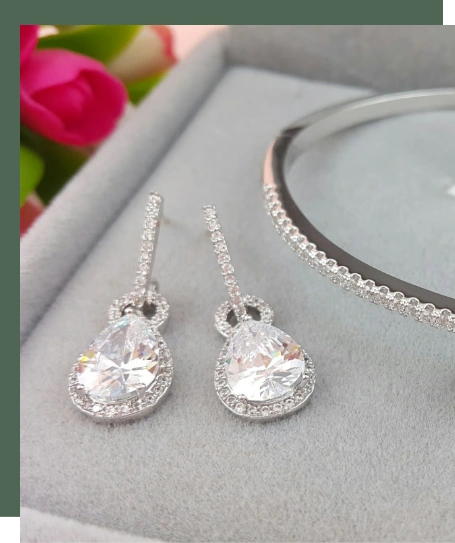
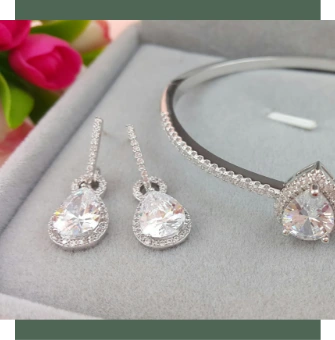
Transforming the Jewelry Industry with Lab Created Diamonds
Lab grown diamonds are not a trend that will go away, rather they are steadily gaining prominence in the jewelry industry and are increasingly embraced by people worldwide. The driving forces behind this surge include their cost-effectiveness, ethical production, and minimized environmental impact.
Those who opt for lab grown diamonds will find that their prices are significantly lower than those of mined stones, typically by 20-40%. This price disparity does not reflect a quality compromise, but rather results from streamlined supply chain logistics.
The Sustainability of Lab Grown Diamonds
Compared to the extensive land use required for diamond mining, lab grown diamonds provide a less disruptive and more sustainable alternative. However, it’s essential to acknowledge that these lab-created gems demand a substantial amount of power for their growth, typically between 250 kWh and 750 kWh. With evolving technologies, this figure is expected to decrease. Some lab diamond producers have already reported that their diamonds require as little as 20 kWh for growth. An increasing number of lab diamond manufacturers, including some of our esteemed suppliers, are harnessing solar energy to offset the energy expended during diamond creation.
In your quest for an ethically sourced diamond ring, whether lab-grown or mined, it’s crucial to purchase from a trustworthy and ethical jeweler. At Diamond Lab, a family-owned business with roots going back to 1973, we pride ourselves on our transparent partnerships with only the most reputable and ethical diamond suppliers. We are committed to sourcing mostly GIA and IGI certified diamonds for our mined and lab grown diamond collections. This commitment ensures that your purchase is not only stunning and high-quality, but also environmentally conscious and sustainable.
With an unyielding commitment to excellence we are at the forefront of this transformative movement, bringing ethical, affordable, and high-quality lab grown diamonds to the Greece, Europe and the rest of the world.